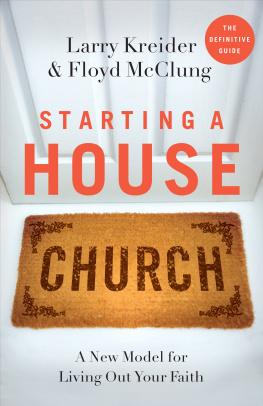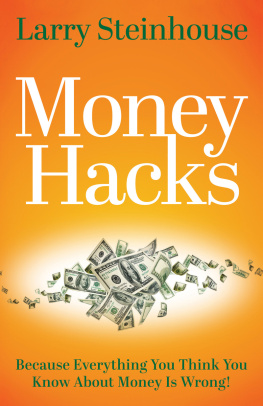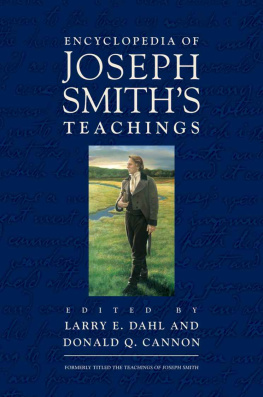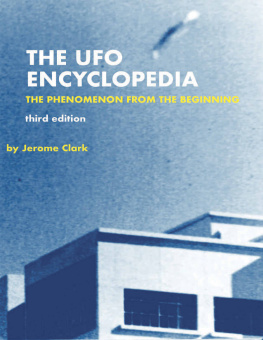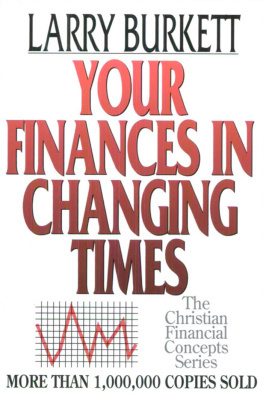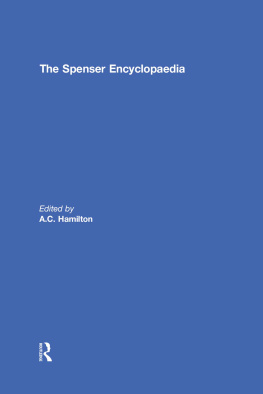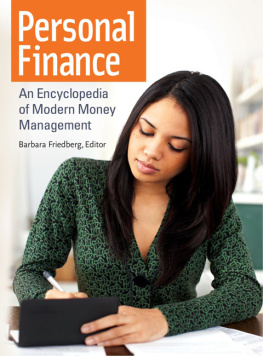Larry Allen - Encyclopedia of Money
Here you can read online Larry Allen - Encyclopedia of Money full text of the book (entire story) in english for free. Download pdf and epub, get meaning, cover and reviews about this ebook. year: 1999, publisher: ABC-CLIO, genre: Romance novel. Description of the work, (preface) as well as reviews are available. Best literature library LitArk.com created for fans of good reading and offers a wide selection of genres:
Romance novel
Science fiction
Adventure
Detective
Science
History
Home and family
Prose
Art
Politics
Computer
Non-fiction
Religion
Business
Children
Humor
Choose a favorite category and find really read worthwhile books. Enjoy immersion in the world of imagination, feel the emotions of the characters or learn something new for yourself, make an fascinating discovery.

- Book:Encyclopedia of Money
- Author:
- Publisher:ABC-CLIO
- Genre:
- Year:1999
- Rating:5 / 5
- Favourites:Add to favourites
- Your mark:
- 100
- 1
- 2
- 3
- 4
- 5
Encyclopedia of Money: summary, description and annotation
We offer to read an annotation, description, summary or preface (depends on what the author of the book "Encyclopedia of Money" wrote himself). If you haven't found the necessary information about the book — write in the comments, we will try to find it.
Encyclopedia of Money — read online for free the complete book (whole text) full work
Below is the text of the book, divided by pages. System saving the place of the last page read, allows you to conveniently read the book "Encyclopedia of Money" online for free, without having to search again every time where you left off. Put a bookmark, and you can go to the page where you finished reading at any time.
Font size:
Interval:
Bookmark:
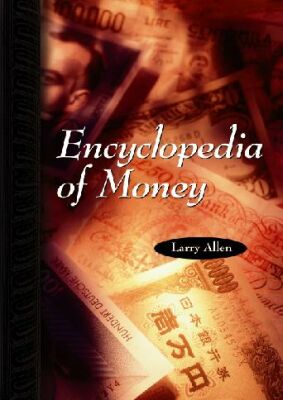
| Page iv |
Copyright 1999 by Larry Allen
All rights reserved. No part of this publication may be reproduced, stored in a retrieval system, or transmitted, in any form or by any means, electronic, mechanical, photocopying, recording, or otherwise, except for the inclusion of brief quotations in a review, without prior permission in writing from the publishers.
Library of Congress Cataloging-in-Publication Data
Allen, Larry.
Encyclopedia of money / Larry Allen.
p. cm.
Includes bibliographical references and index.
ISBN 1-57607-037-9 (alk. paper)
1. Money Encyclopedias.I. Title.
HG216.A43 1999
332.403dc21 99-38048
CIP
03 02 01 00 10 9 8 7 6 5 4 3 2
ABC-CLIO, Inc.
130 Cremona Drive, P.O. Box 1911
Santa Barbara, California 93116-1911
This book is printed on acid-free paper.
Manufactured in the United States of America.
| Page v |
Contents
Encyclopedia of Money
| Page i |
| Page iii |
Larry Allen

Santa Barbara, California
Denver, Colorado
Oxford, England
| Page vi |
| Page ii |
| Page vii |
| Page viii |
| Page ix |
This book is written for the general reader, who may use it as a reference source to the important monetary experiences that have either shaped the evolution of money and banking systems or that for other reasons are regarded as interesting monetary experiments. The reader who does not know where to start may want to read the book from beginning to end. In the spirit of the adage that all sides of an issue cannot be seen from just one angle, this book approaches the subject of money as seen from every angle represented by important monetary systems and experiments in history.
Innovations in monetary systems invariably entail a redistribution of income, and therefore the subject of money is not one we expect to see handled without prejudice. This book, however, strives to treat the subject without trying to prove or disprove current theories in monetary economics. Some value judgments can hardly be avoided in descriptions of episodes of hyperinflation, which remind us of the monetary insanity that lurks beneath the surface of fiat money systems. Also, complex scenarios of monetary debacles often seem clearer when seen through the trained eyes of the leading economists in history and theories can lend organization to an otherwise chaotic series of events. In this book theories are advanced only to bring to light the order that exists where there appears to be no order, and to enliven the discussion with thought-provoking ideas. The main organizing principle in this book consists in the common characteristics shared by various types of money and monetary systems, rather than unifying theoretical threads that can be traced from the first page to the last.
This book presents the subject of money in the form of more than 300 topics ranging from whale tooth money, fur money, and tobacco money to the mechanisms of the modern international monetary system. Individual topics are intended to stand on their own merits, each striving to penetrate as a roving spotlight all the nooks and crannies of monetary systems, lingering over the idiosyncrasies, and looking for archaic relics in modern systems and modern traits in ancient systems.
The professionally trained economists will miss in this book much of the technical jargon and sophisticated mathematical and statistical analysis associated with the science of monetary economics. Perhaps the absence of theory and jargon will be repaid in the revelation of the almost endless variety of monetary systems and experiments that deserve our attention, and can teach us something about the nature of money.
The composition of this book was enriched substantially by conversations with Dr. Ron Fritze, professor of history at Lamar University, whose far-flung knowledge of history and ancient societies gave me many clues concerning the whereabouts of unique monetary experiences. In discussing the treatment of various subjects, I always benefited from the clarification that any issue received at his hands. The hearty cooperation of the librarians at the Mary and John Gray Library on the Lamar University campus impressed me during the process of
| Page x |
assembling materials for this book. They seemed never at a loss for tools that helped me find particular references and books. A word of appreciation is due to Todd Hallman and others at ABC-CLIO who patiently guided me through this project. The considerate thoughtfulness of the people at ABC-CLIO could always be counted on to inspire a sense of fresh confidence. Finally, my daughter earned my appreciation for always allowing me to baby-sit my granddaughter while she unsnarled my computer.
| Page xi |
Money serves four basic functions in an economic system. It acts as: (1) a medium of exchange; (2) a unit of measure; (3) a store of value; and (4) a standard of deferred payment.
As a medium of exchange, money must be universally accepted in exchange. It must be something always accepted in trade. In prisoner-of-war camps cigarettes have served as a medium of exchange, and in the northern reaches of the earth furs have circulated as a medium of exchange. Livestock and precious metals have a long history of service as mediums of exchange.
Money must also act as a unit of measure, comparable to yards, gallons, tons, cubic feet, or any other measure. Pounds sterling, American dollars, Japanese yen, German marks, and French francs all serve as units of measurement. A consumer can buy 10 gallons worth of gasoline or $10 worth of gasoline. The Hudson Bay trading posts in Canada measured sales and profits in terms of beaver pelts, and Virginia colonists priced goods in terms of pounds of tobacco.
Anything meeting all of the demands placed on money must be satisfactory as a store of value. That is, it must preserve its value over a length of time. Perishable commodities rarely serve as money because wealth stored in perishable commodities is doomed to extinction. Precious metals such as gold and silver, known for resistance to corrosion and natural deterioration, are the most prized as monetary commodities and have few rivals as commodities that preserve value over time. Livestock reproduce, allowing them to preserve value over time, and even earn a form of interest. Inflation is the chief enemy of paper money because it renders the paper money useless as a store of value.
Money should also furnish society with a standard of deferred payment, enabling debtors and creditors to negotiate long-term contracts. Creditors want assurance that debtors cannot legally discharge debts with money possessing less purchasing power than the money originally borrowed. An unanticipated depreciation of the currency shortchanges creditors and gives debtors a windfall gain, arbitrarily redistributing income from creditors to debtors.
Next pageFont size:
Interval:
Bookmark:
Similar books «Encyclopedia of Money»
Look at similar books to Encyclopedia of Money. We have selected literature similar in name and meaning in the hope of providing readers with more options to find new, interesting, not yet read works.
Discussion, reviews of the book Encyclopedia of Money and just readers' own opinions. Leave your comments, write what you think about the work, its meaning or the main characters. Specify what exactly you liked and what you didn't like, and why you think so.

